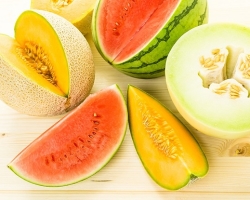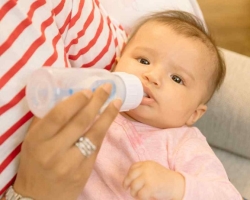Have you counted how much a family budget for diapers for a child has been counting? Want to know how to save on the detriment of the child? In this article you will learn what reusable diapers are, what they are and practical tips how to use them.
Content
- Let's find out what are reusable diapers?
- The difference between a reusable diaper and disposable: pros and cons of
- Types of reusable diapers
- Reusable diapers of a bamboo coal
- How to adjust the size of the reusable diaper?
- How to use reusable diapers?
- Why can a reusable diaper flow?
- How to wash and dry reusable diapers?
- How many reusable diapers do you need and where to buy them?
- Video: How to use reusable diapers?
Today, more and more parents choose reusable diapers for their babies, despite the fact that in all supermarkets, the shelves are clogged with disposable Pampers, Libero, Huggies, etc.
What leads them?
Of course, the desire to use natural and environmentally friendly for your baby, as well as the desire to save.
Let's find out what are reusable diapers?
 The difference between a reusable diaper and disposable: pros and cons of
The difference between a reusable diaper and disposable: pros and cons of
A one -time diaper was invented in 1957. Viktor Mills, a chemist-technologist who worked at Procter & Gamble. The main goal of this invention was to facilitate life for parents.
 Pros:
Pros:
- convenient to use;
- lack of constant washing, washing, night duty, replaceable clothes on walks;
- a good disposable diaper provides dryness to the child.
Minuses:
- disposable diapers are expensive;
- made not only from natural materials;
- distributes should be changed at least every 6 hours, otherwise serious diseases of the genitourinary system may occur;
- the child does not notice when “doing his deeds”;
- parents cannot track the frequency of urination and their number, which in some diseases is important to know;
- parents may not notice when the child went “by and large”, which can lead to urinary tract infection and irritation of the mucosa;
- allergic reactions to materials from which diapers are made are possible;
- the skin of the skin under the diaper is disturbed, and this is 30% of the child’s entire body;
- such diapers greatly harm the environment, after one child there remains a whole ton of garbage, which does not decompose, and 4-5 trees are spent on the manufacture of one diaper;
- doctors do not recommend wearing disposable diapers for some diseases, such as diathesis, dermatitis, eczema, at elevated temperature and diarrhea.
Reusable nappies They were used by women back in the Middle Ages. The materials, of course, were different: flax, wool, hemp, later it was gauze. A lot of washing, yes, but everything is natural and does not harm the health of the baby.

Pros:
- environmentally friendly and made of natural materials;
- do not worsen the breath of the skin;
- the child feels when “doing his deeds”;
- provide good “wide swaddling”, which is very important for the proper development of the musculoskeletal system of babies;
- do not cause allergies;
- the use of reusable diapers is much cheaper than disposable, you do not need to buy new diapers constantly;
- can be used for several children;
- they do not cause such serious damage to the environment as disposable, because They do not leave tons of non -decomposed debris, are made from simpler materials that do not require deforestation;
- there are no medical contraindications for their use.

Minuses:
- require constant washing;
- it is often necessary to change them quite often, which is inconvenient during night sleep and on the road;
- in cold weather, it is better not to use a walk.
CONCLUSION: You can use reusable and disposable diapers, the main thing is to combine them correctly!
Types of reusable diapers
Modern tissue diapers differ from their predecessors and are panties and inserts. Distributes of different manufacturers are undoubtedly different from each other, but the principle of action remains common: the liners absorb moisture, and the panties do not allow moisture to get into the outside.
 Liners made from different materials:
Liners made from different materials:
- cotton;
- microfiber;
- white bamboo fabric;
- coal bamboo fabric.
Cotton is mainly used for babies, because Very soft and do not rub the baby's delicate skin, but they absorb moisture relatively little, but it is not necessary for newborns.
 Liners are of different thicknesses:
Liners are of different thicknesses:
- two -layer;
- three -layer;
- four -layer
- and five -layer.
The absorption of liners depends on the material from which they are made on the number of layers. Often, several materials are used in one insert. For example, the outer layer in contact with the skin of the baby is made of fabric, which, due to its properties, passes moisture and remains almost dry, and the inner layers absorb moisture.
Reusable diapers of a bamboo coal
The best material is considered the best-angle (black), which has a good microstructure, excellent absorbing ability, antibacterial properties and is environmentally friendly material.
In such inserts, the outer layer is made of bamboo-angular fabric, and the inner of microfibers.
Panties In reusable diapers, special fabric is sewn, which does not get wet, but passes the air both in dry and in a filled state. The inner surface of the panties consists of a fabric of well -transmitting moisture well, but it remains almost dry. This design allows the skin of the baby to breathe and remain dry, does not cause diaper rash and dermatitis.
On the back and sides on the legs, rubber bands are sewn, which additionally protect against leaks, tightly fitting the baby's body.
 The outer fabric in panties is also different:
The outer fabric in panties is also different:
- polyester with special waterproof spraying (within the rational, of course, this is not a film),
- natural cotton fabric, but unfortunately it gets wet faster and more often;
- the velor outer layer, very soft and pleasant to the body, beautiful colors, but such a diaper will dry for a very long time.
Inner fabric in diapers is also used different:
- microflis;
- coal-bamboo;
- the net is a summer option.
 It should be noted that panties with a net are quite practical and convenient to use.
It should be noted that panties with a net are quite practical and convenient to use.
- firstly, they dry very quickly;
- secondly, they are thin and convenient in wear;
- thirdly, “big deeds” are easily removed from them and are easily erased.
Some manufacturers offer additional protecting rubber bands and the inner layer of coal-bamboo fabric.
 Here, choose what your soul wants and what your pocket allows. Now there is already a fairly large selection of reusable diapers, plain and multi -colored, with buttons and Velcro made of different materials.
Here, choose what your soul wants and what your pocket allows. Now there is already a fairly large selection of reusable diapers, plain and multi -colored, with buttons and Velcro made of different materials.
By the way, about buttons and Velcro. Here, too, choose how it will be more convenient for you.
- There are panties that fasten buttons. Usually 2pcs on each side, but there is an additional third that regulates the fullness of the legs.
- Panties fastening on velcro. The disadvantage of such a fastener is its fragility and the fact that it can “cling” to clothing.
 How to adjust the size of the reusable diaper?
How to adjust the size of the reusable diaper?
With buttons, you can adjust two parameters:
- the width on the tummy, snapping closer or further from the center, be sure to monitor the buttons are closed symmetrically;
- the height/depth of the diaper, clicking on the upper row of the central buttons with one of the lower ones or leaving them open.
Depending on how the buttons for regulating the height/depth are filled, the following dimensions are accepted:
- S., for babies from 3 to 8 kg, the upper and lower row of buttons will be clung;
- M, for children from 6 to 10 kg, the upper and middle rows will click;
- L., for children from 9 to 15 kg, buttons remain open.
 How to use reusable diapers?
How to use reusable diapers?
Liners in panties can be used in two ways:
- Put on top of the pocket in panties, and not in it to save a diaper for the next dressing. In this case, you can use some panties 2-3 times. This method is suitable if you are at home and you can replace the insert if necessary with clean.
- Put the liner in panties in panties, and if you want to increase the use time (for walking, sleep), you can use 2 inserts at the same time. This will not cause discomfort in the baby, because They will be fixed in a pocket, and the inner fabric of the diaper will provide dryness in contact with the skin. With this method of location of the liner, the diaper cannot be reused, only after washing.
ADVICE:In order to avoid unwanted consequences, do not leave the child in reusable diapers for a long time.
 When to change the diaper? If the liner absorbed a sufficient amount of liquid, it no longer retains moisture in itself and the internal material of the panties becomes wet. When this happened, the diaper needs to be changed. On average, this usually happens after 1-3 hours. When using two inserts at the same time, the diaper can be used for 4-6 hours. If you put the insert over the panties, and not in the pocket, feel the rubber bands near the legs. Dry? You can use the diaper again if wet, replace it with clean.
When to change the diaper? If the liner absorbed a sufficient amount of liquid, it no longer retains moisture in itself and the internal material of the panties becomes wet. When this happened, the diaper needs to be changed. On average, this usually happens after 1-3 hours. When using two inserts at the same time, the diaper can be used for 4-6 hours. If you put the insert over the panties, and not in the pocket, feel the rubber bands near the legs. Dry? You can use the diaper again if wet, replace it with clean.
Why can a reusable diaper flow?
Yes, accidents sometimes happen, how without them? There are several reasons for this, having warned which you will succeed.
- A new diaper can occur the first time. After several washes, the problem will go away. This is due to the fact that natural materials contain oils that need to be washed off so that the fabric begins to pass moisture and absorb it.
- You wash the diaper with soap or add air conditioning. This must be abandoned, because The pores of the material inside the diaper are clogged.
- You have been holding the child in the diaper for too long and he is simply not able to absorb more.
- You incorrectly picked up the size or fastened the diaper and it does not fit tightly to the skin of the baby. Do not be afraid to experiment and adjust the size of the diaper, and you will find the situation suitable for your child.
- The liner inside the diaper shifted. Spread it well when dressing.
How to wash and dry reusable diapers?
For reusable diapers, you need to properly care for, so that they serve for a long time and efficiently.
- Be sure to wash before the first use.
- Wash in warm water 30-40 ° C with daily use.
- Wash once a week at a temperature of 60 ° C to prevent the reproduction of bacteria.
- Use the function of additional rinse.
- Wash in the machine in the full cycle.
- It is advisable to use a liquid gel for washing children's things.
- You can not use bleach, tissue softeners.
- Do not iron!
- You can dry in the washing machine.

IMPORTANT : Do not dry reusable diapers and liners on hot batteries. Drying on warm batteries is allowed or put some kind of fabric under them. Dry panties in the inner layer down, and external upwards, because The outer layer is very afraid of high temperatures.
If you do not comply with these recommendations, the diapers of the diapers is coarse and loses its properties, diapers begin to irritate the baby’s delicate skin, flow and absorb the liquid poorly.
Perform these tips and reusable diapers will serve you for a long time and reliably, because their life is unlimited and even with daily washing they do not lose their appearance and absorbing properties.
How many reusable diapers do you need and where to buy them?
It all depends on how you use them, what diapers you choose, whether you will use disposable (for example, for night sleep and walk in winter). On average, 5-10 panties will go per child and 2 times more liners per day. It is convenient to wash all the diapers used in the day in the in -meal in the evening and hang them to dry at night. Then in the morning you will already have a clean and fresh set for the whole day.
Reusable diapers of various companies can be bought in many online stores. The choice is quite large, choose a wallet to your taste.
 Speaking of a wallet, the purchase of reusable diapers you will pay for the first 2-4 months, and they will be enough for you, maybe not for one child 😉
Speaking of a wallet, the purchase of reusable diapers you will pay for the first 2-4 months, and they will be enough for you, maybe not for one child 😉


 The difference between a reusable diaper and disposable: pros and cons of
The difference between a reusable diaper and disposable: pros and cons of

 How to use reusable diapers?
How to use reusable diapers?







I want to share my experience ... Mimmyjoy diapers, a gorgeous thing, if you want to save on diapers, do not store a stinking bag with used one -time all day, rejoice at a clean ass of your child ... Then I think you will evaluate ... having spent once and buying a package, I don’t throw money anymore anymore to the trash ..